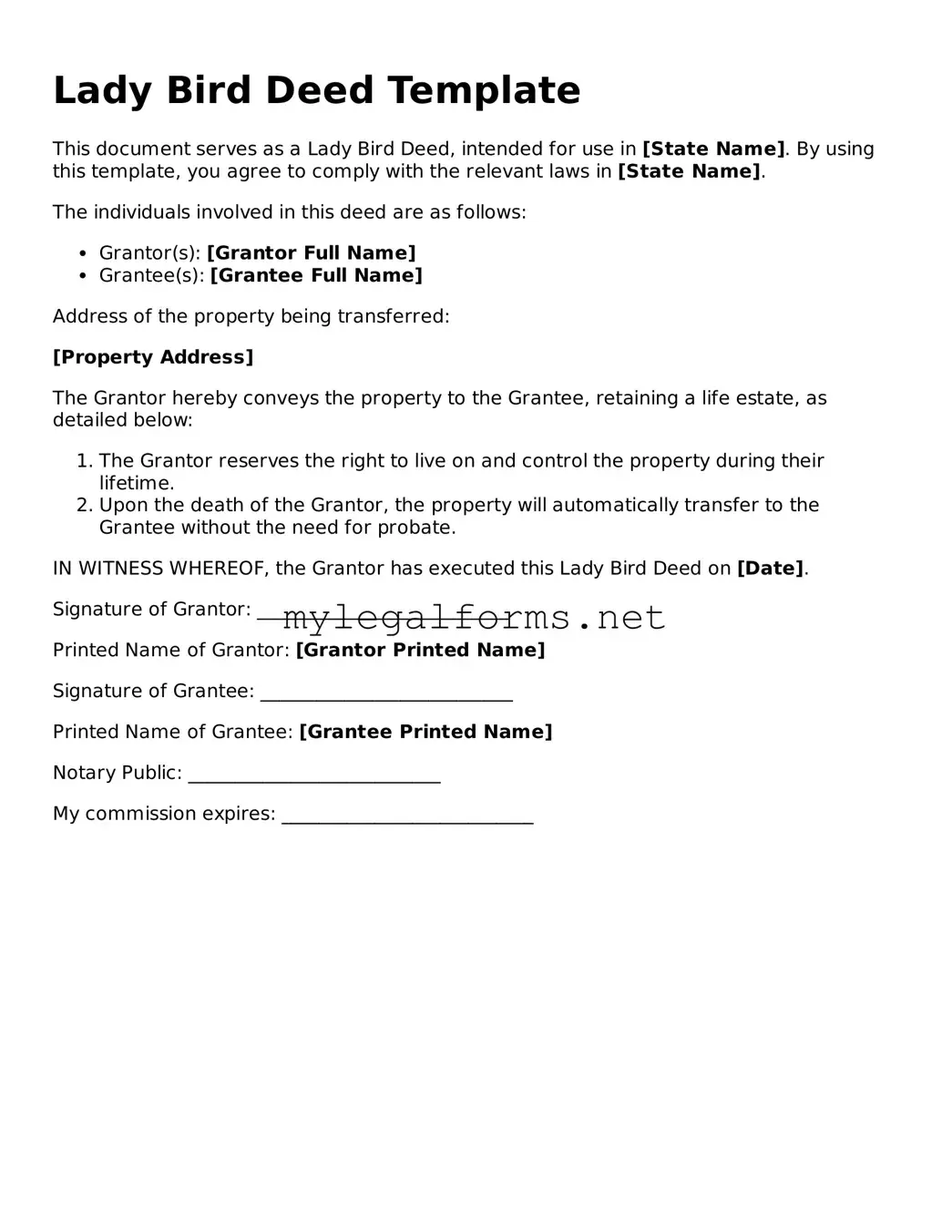Attorney-Approved Lady Bird Deed Form
The Lady Bird Deed is a legal document that allows property owners to transfer their real estate to beneficiaries while retaining control during their lifetime. This unique form of deed provides significant benefits, including the ability to avoid probate and protect the property from certain creditors. Understanding the intricacies of the Lady Bird Deed can empower individuals to make informed decisions about their estate planning.
Launch Lady Bird Deed Editor
